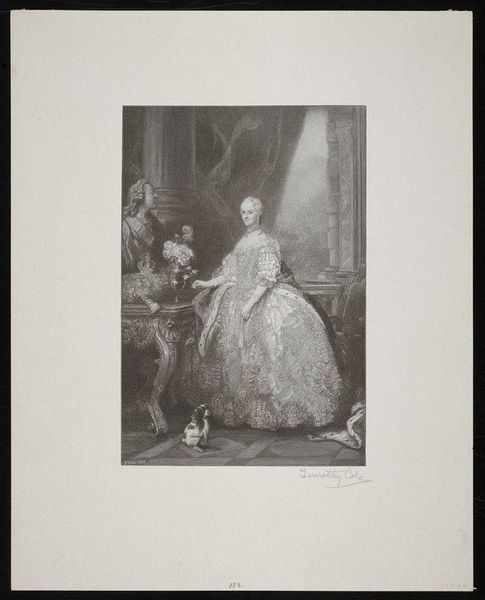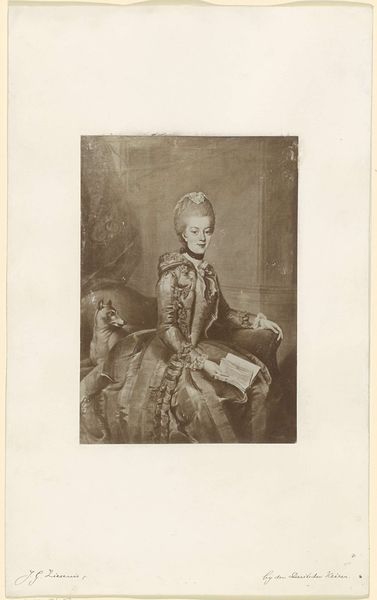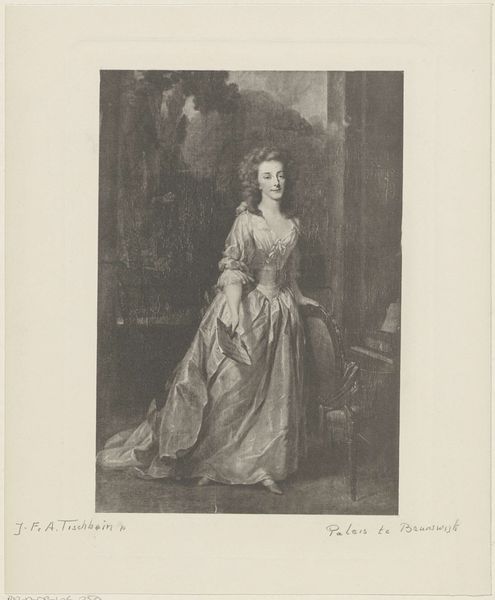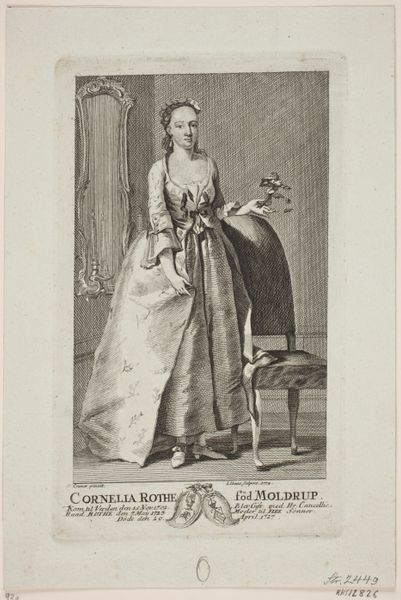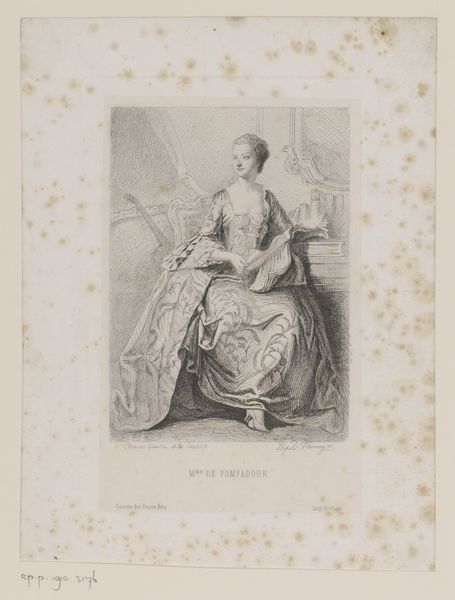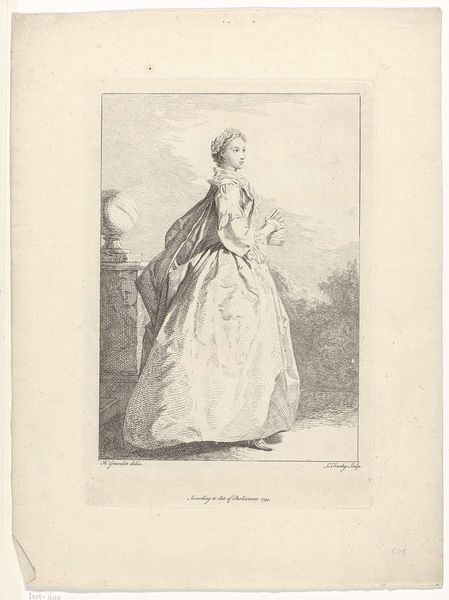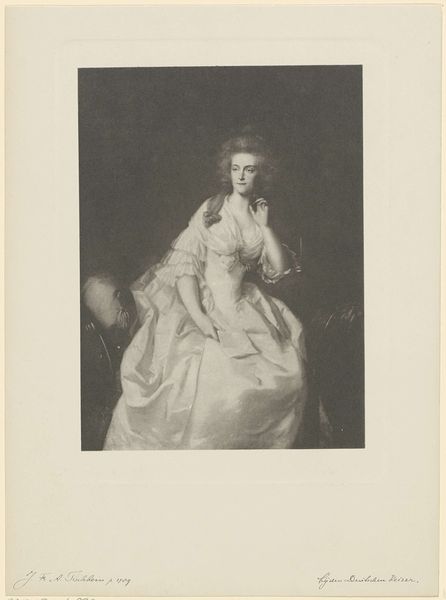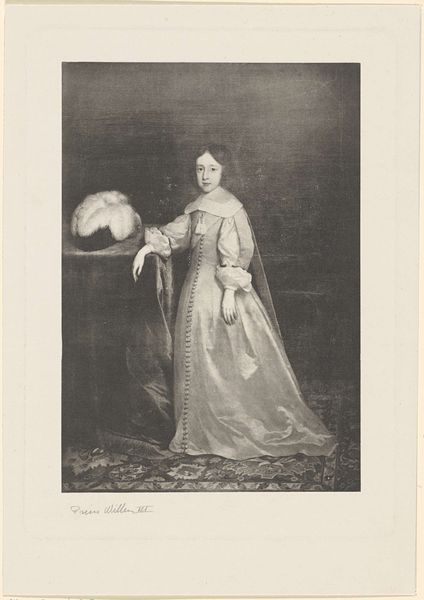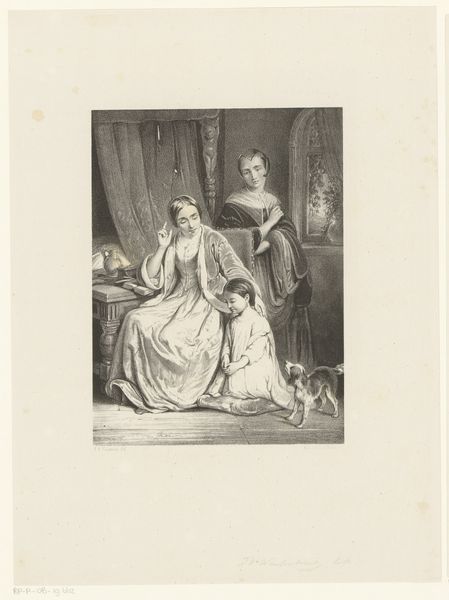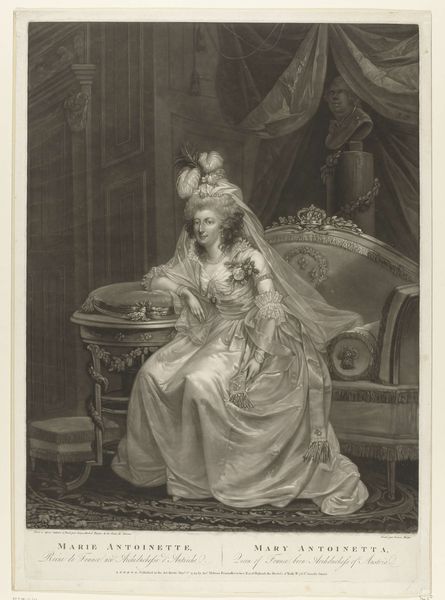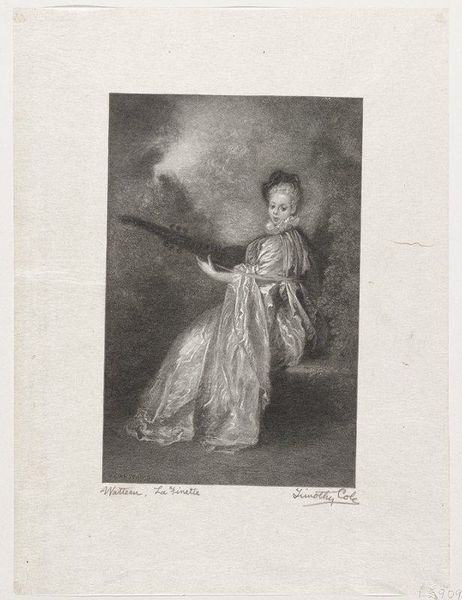
print, etching
#
portrait
# print
#
etching
#
history-painting
#
academic-art
Dimensions: height 250 mm, width 179 mm
Copyright: Rijks Museum: Open Domain
Editor: This is an etching from the 19th century titled "Portret van Anna van Hannover," currently held in the Rijksmuseum. It looks like a fairly straightforward portrait, but I am curious to understand what to make of this kind of image that exists to portray status through a reproducible print. What is your perspective on the social function of these portrait prints, given they are not unique paintings? Curator: Let’s think about this portrait not as an isolated image but as an object deeply embedded in social and economic systems. Etchings like this allowed for wider circulation than paintings, reproducing images of power and disseminating ideas about status to a broader audience. Consider the labour involved - the etcher, the printer, and the distributors. What social classes were implicated in this production and who was its intended audience, shaping consumer culture and reinforcing societal hierarchies through readily accessible imagery? Editor: That's an interesting reframing of my perception: I wasn’t thinking of it from the distribution perspective. It highlights accessibility, but that's still within the realm of relative privilege, wouldn't you say? Who could even afford such a thing? Curator: Exactly! While seemingly more accessible than a unique painted portrait, etchings like this still represent a level of consumption tied to certain classes. Consider the cost of the print, the framing, and the social space to display it. How does the print, as a commodity, serve to reinforce the divide between those who can participate in this culture of collecting and those who cannot? What statement is made by being able to possess this etching, itself reproducing the image of nobility? Editor: It makes you wonder about the social aspirations connected to the circulation of these images, as commodities as well as symbols. Thank you for that enlightening explanation of a print. Curator: And thank you for raising these crucial questions about access and social context. Thinking through the material conditions of art-making allows us to grasp deeper social meaning in the work itself.
Comments
No comments
Be the first to comment and join the conversation on the ultimate creative platform.
